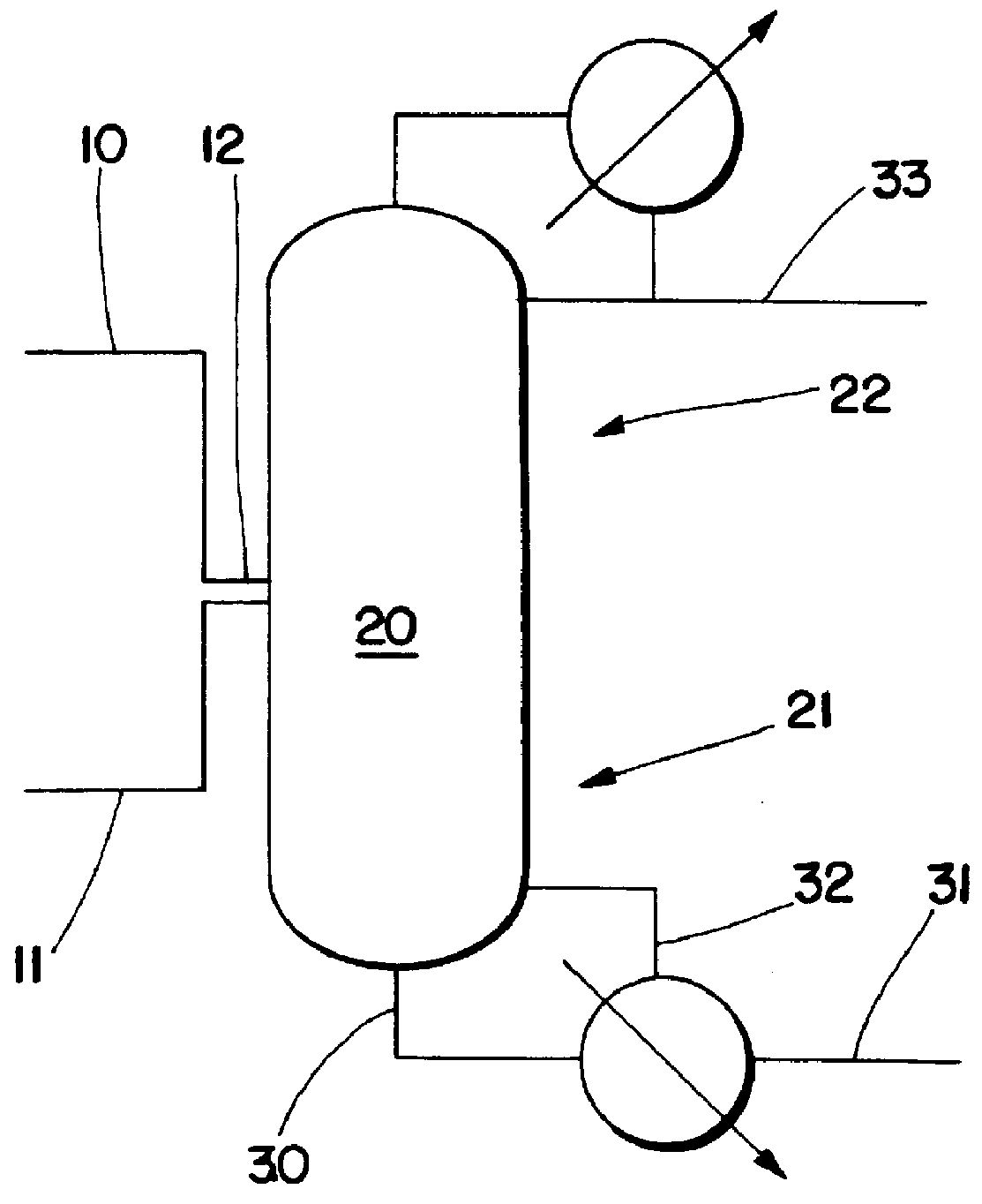Selective production of diethanolamine
a diethanolamine and selective technology, applied in the field of selective production of diethanolamine, can solve the problems of reactive distillation not being used for the production of alkanolamines, the production of dea is normally limited to a maximum of about 35%,
- Summary
- Abstract
- Description
- Claims
- Application Information
AI Technical Summary
Benefits of technology
Problems solved by technology
Method used
Image
Examples
example 2
Employing the configuration of FIG. 2, material and energy balances were calculated for a 20 foot diameter column with 15 theoretical trays. The tower feed was 9000 and 5500 pounds / hour of MEA and EO, respectively. The EO and MEA are fed to tray 11. The (molar) reflux ratio used is 20. The hold-up per tray is set at 80 cubic feet (ft.sup.3) for trays 2 through 11. This corresponds to an approximate weir height of 3 inches. For pressure drop calculations, trays 2-11 are taken as sieve trays, trays 12-14 are taken to be Sulzer BX.TM. wire mesh tower packing. In the feed to the tower, the molar ratio of MEA:EO is 1.18 yet the selectivity to DEA is 85%. To achieve similar selectivity in a plug flow reactor, an MEA:EO mole ratio of about 3.6 is required (as per the calculations of Lowe's British Patent Number 763,932 (1956)). One of the important features of this invention is that the selectivity to DEA is adjustable via the reflux ratio. In this regard, FIG. 3 shows the effect of reflux...
example 3
The material and energy balances for a mixed amine feed were calculated using the Aspen Plus.TM. process simulator. The feed contains 6200, 3100, 700, and 3700 lbs / hour of MEA, DEA, TEA, and EO, respectively. The feed is meant to correspond to that from a typical ethanolamines reactor operating with about a 5:1 NH3:EO ratio combined with the overhead from the tower which is recycled to the feed. Again a 20 foot diameter, 15 theoretical tray tower is used. The mixed amine is fed to tray 12 and the EO to tray 9. The hold-ups for trays 2-12 are 80 cubic feet. Trays 2-12 are taken as sieve trays and trays 13-14 are taken as Sulzer BX.TM. wire mesh packing for pressure drop calculations. FIG. 4 shows the effect of reflux ratio on DEA selectivity and reboiler duty. The results of the calculations are shown in Table 3.
PUM
| Property | Measurement | Unit |
|---|---|---|
| Temperature | aaaaa | aaaaa |
| Temperature | aaaaa | aaaaa |
| Fraction | aaaaa | aaaaa |
Abstract
Description
Claims
Application Information
 Login to View More
Login to View More - R&D
- Intellectual Property
- Life Sciences
- Materials
- Tech Scout
- Unparalleled Data Quality
- Higher Quality Content
- 60% Fewer Hallucinations
Browse by: Latest US Patents, China's latest patents, Technical Efficacy Thesaurus, Application Domain, Technology Topic, Popular Technical Reports.
© 2025 PatSnap. All rights reserved.Legal|Privacy policy|Modern Slavery Act Transparency Statement|Sitemap|About US| Contact US: help@patsnap.com



